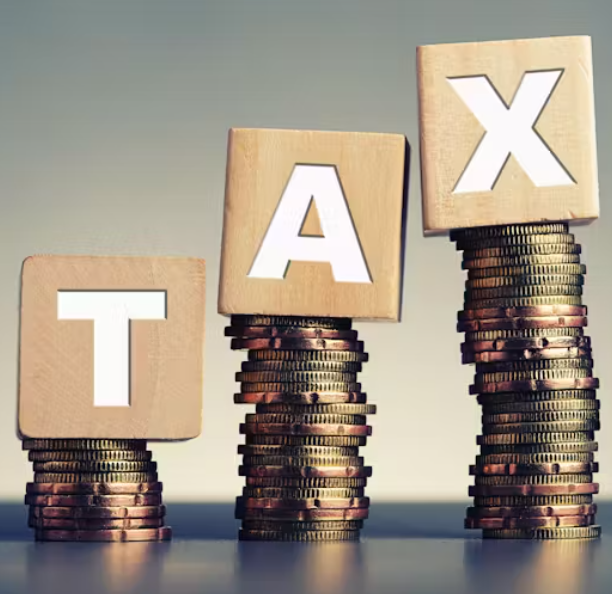
How the 2022 Autumn Statement Affects Investors and Tax Strategies
The 2022 Autumn Statement, presented by Chancellor Jeremy Hunt, marked a significant shift in the UK government’s approach to economic policy. With a clear focus on reducing the UK’s national debt, the statement reversed many of the earlier proposals from the previous Chancellor’s mini-Budget. This move, aimed at addressing a growing debt that now equates to around 100% of the UK’s GDP, had mixed reactions, but one thing was clear: it opened the door for investors to reassess their strategies, particularly when it comes to tax-efficient investments.
The announcement of several key tax changes provided experienced investors with the opportunity to rethink their approach and focus more on investments that offer tax relief. Here are four major tax changes from the Autumn Statement and how they affect investors:
1. Lowered Additional Rate Income Tax Threshold to £125,140
Starting from April 2023, the threshold for the 45% additional rate of income tax will drop from £150,000 to £125,140. This change will impact an estimated 250,000 more high earners, pushing those with incomes above £125,140 into a higher tax bracket. In effect, this means anyone previously taxed at 40% will now pay an additional 5p per £1 earned over this new threshold, and those already in the 45% tax band will see an even greater portion of their income taxed at this rate.
2. Reduction in Capital Gains Tax Allowance to £3,000
Currently, the capital gains tax (CGT) allowance stands at £12,300, but this will drop to £6,000 in April 2023 and further fall to £3,000 by April 2024. This will be the lowest CGT allowance since 1981, and with asset values—such as property—continuing to rise, many investors will need to plan ahead for the increased tax burden on their capital gains.
3. Decrease in Dividends Tax Allowance to £500
The tax-free dividend allowance will see a steep reduction in the coming years. From April 2023, the allowance will drop from £2,000 to £1,000, and by April 2024, it will fall further to just £500. This represents a drastic reduction—90% over six years. While the tax rates themselves remain unchanged, investors will now have to pay more tax on dividends than before.
4. Inheritance Tax Freeze Extended to 2028
The UK government has extended the freeze on the inheritance tax (IHT) nil-rate band until 2028. This means that the current threshold of £325,000 will not increase for another two years, despite rising property values. The freeze will likely result in an increase in IHT receipts as more estates surpass the threshold due to rising asset values. The government’s estimate suggests IHT collections could hit £7.8 billion in the 2027/28 tax year.
Minimizing the Impact of Tax Changes
Although none of these changes involve an increase in tax rates, they will still significantly affect taxpayers due to the lower thresholds. According to the Institute for Fiscal Studies, about 3 million people are expected to pay higher income taxes by 2026, and those earning over £150,000 will face an additional £1,243 in tax each year.
To offset the growing tax burden, Chancellor Hunt reaffirmed support for two key investment schemes that can help reduce taxes while also supporting early-stage businesses: the Enterprise Investment Scheme (EIS) and the Seed Enterprise Investment Scheme (SEIS).
The EIS and SEIS: Tax-Efficient Investment Options
Both the EIS and SEIS offer generous tax reliefs, which can help mitigate the impact of tax increases. As of April 2023, the government will double the investment limit for the SEIS, allowing individuals to invest up to £200,000 annually. This increase provides an opportunity for investors to claim up to £100,000 in income tax relief per year. Additionally, the government extended the EIS beyond its original expiration date in 2025, ensuring ongoing support for early-stage companies.
These schemes offer a variety of tax incentives, including income tax relief, capital gains tax exemptions, and inheritance tax relief. For investors facing rising taxes, these schemes not only help reduce their tax liability but also offer the chance to earn superior returns by investing in promising startups.
Other Tax-Efficient Investment Options: VCTs and ISAs
Venture Capital Trusts (VCTs) and Individual Savings Accounts (ISAs) also provide valuable tax reliefs for investors. VCTs offer income tax relief on investments in venture capital trusts, and dividends from these trusts are tax-free. ISAs, on the other hand, allow investors to save up to £20,000 per year tax-free, though they don’t offer inheritance tax relief unless the ISA holds shares eligible for Business Property Relief (BPR), such as those listed on the Alternative Investment Market (AIM).
The Importance of Tax-Efficient Investments
As the UK faces rising inflation and increased tax rates, investors must consider how they can mitigate the tax burden on their portfolios. Tax-efficient investment routes, such as the EIS, SEIS, VCTs, and ISAs, offer a way to do this while still targeting high returns.
For investors looking to safeguard their wealth and navigate an increasingly complex tax environment, exploring these investment schemes and understanding their benefits can be a crucial part of an effective strategy. As always, it’s essential for investors to conduct thorough research and consult with experts to ensure that their investment decisions align with their long-term financial goals.
In conclusion, while the Autumn Statement brought several changes that will impact investors, it also presented opportunities to leverage tax-efficient investments to minimize the financial impact of these changes. By incorporating schemes like EIS, SEIS, VCTs, and ISAs, investors can protect their wealth against rising taxes and continue to grow their portfolios even in challenging times.